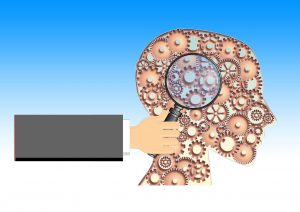Mental Health Check-In: Eating Disorders
Trigger Warning: Mention of eating disorders, anxiety, and depression
Eating disorders affect 30 million people in the United States and 1,590,000 of them are teens, ages 13 to 18. Fifty percent of teenage girls and 30 percent of teenage boys have experienced symptoms or displayed unhealthy eating habits or participated in behaviors that lead to excessive weight loss. While eating disorders are common in teens, many people still don’t know the facts surrounding eating disorders. Instead people are more familiar with the stigma and stereotypes surrounding it.
The exact cause of eating disorders is unknown. As with other mental illnesses, there may be many causes, such as:
- Genetics and biology. Certain people may have genes that increase their risk of developing eating disorders. Biological factors, such as changes in brain chemicals, may play a role in eating disorders.
- Psychological and emotional health. People with eating disorders may have psychological and emotional problems that contribute to the disorder. They may have low self-esteem, perfectionism, impulsive behavior and troubled relationships.

Individuals who suffer from eating disorders have unhealthy eating habits and have an obsession over food, body weight, or body shape. When associating food with eating disorders it usually has a negative relationship. While the exact cause is unknown, there are numerous risk factors that are associated with possibly developing an eating disorder. Media- social, print, television- can be a factor in teens. It can be from social media or the shows that people watch. Media can induce pressure, especially in teenagers, to be thin, promote unhealthy lifestyle habits and the “ideal” body image, which can differ for each sex. Men would look muscular while women would be skinny. Until recently, the media frequently displayed thin models photoshopped to perfection. Also, certain sports like dance, gymnastics, and ice skating can also cause participants to focus on weight. This environment, like social media or toxic household/friends can make people uncomfortable with food or body image. Eating disorders can be hereditary, meaning that it is significantly more likely to occur in people who have parents or siblings who’ve had an eating disorder. Other mental health disorders have also affected people’s eating habits like Obsessive-Compulsive Disorder (OCD), depression, and anxiety. .People with an eating disorder often have a history of an anxiety disorder, depression or obsessive-compulsive disorder. Dieting at a very young age can, later in life, adversely affect people’s relationship with food in general. One half of teenage girls and one quarter of teenage boys have tried dieting with the objective to change their body shape. Dieting at a young age and limiting yourself to few foods, especially ones you might love, can leave people feeling empty and then eventually feeling uncomfortable with food in general.
Specific Disorders
The most common eating disorders in teenagers are bulimia nervosa, binge eating disorders, and anorexia nervosa. Teens diagnosed with eating disorders, 2.7%, have permanent effects.
Bulimia nervosa is defined by the National Eating Disorder Association as, “a serious, potentially life-threatening eating disorder characterized by a cycle of bingeing and compensatory behaviors such as self-induced vomiting designed to undo or compensate for the effects of binge eating”. The average age of bulimia nervosa development is 18 years old. Close to half of the people that are diagnosed with bulimia nervosa also have a mood or anxiety disorder.
Anorexia nervosa, commonly known as anorexia, is defined by the National Eating Disorders Association as, “ an eating disorder characterized by weight loss (or lack of appropriate weight gain in growing children); difficulties maintaining an appropriate body weight for height, age, and stature; and, in many individuals, distorted body image”. People diagnosed with anorexia generally limit the amount of food and calories they eat. It most frequently occurs in children and the number of adolescents affected by it is increasing.

Binge Eating Disorder (BED), according to the National Eating Disorders Association is a, “severe, life-threatening, and treatable eating disorder characterized by recurrent episodes of eating large quantities of food (often very quickly and to the point of discomfort)”. This overeating, results in the development of the unhealthy habit of purging to counteract the binging . BED is the most common eating disorder in the United States.
Resources for Help
There are many resources used to help people with eating disorders. Included are therapy, health counseling, and medications prescribed by a doctor. A national helpline number, 1-800-931-2237, is available. However, the helpline is only open Monday-Thursday 9:00 am – 9:00 pm (eastern time) and on Friday 9:00 am – 5:00 pm. Chatting with a helpline counselor is available by texting ‘NEDA’ to 74174. This option is available 24/7. The National Eating Disorder Association manages both numbers and has updated information for the helpline on their website https://www.nationaleatingdisorders.org/contact-us .
Thank you to Ms. Thompson-Jones for her professional insight.
SOURCES
https://polaristeen.com/articles/10-statistics-of-teenage-eating-disorders/
https://www.nimh.nih.gov/health/statistics/eating-disorders.shtml
https://www.healthline.com/nutrition/common-eating-disorders#what-they-are
https://www.ncbi.nlm.nih.gov/pmc/articles/PMC3010958/
https://www.nationaleatingdisorders.org/learn/by-eating-disorder/


